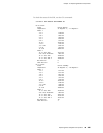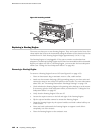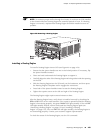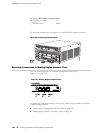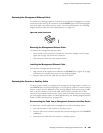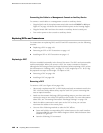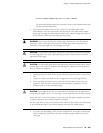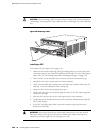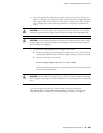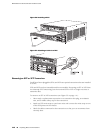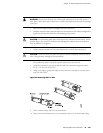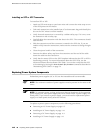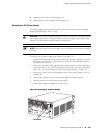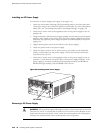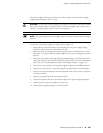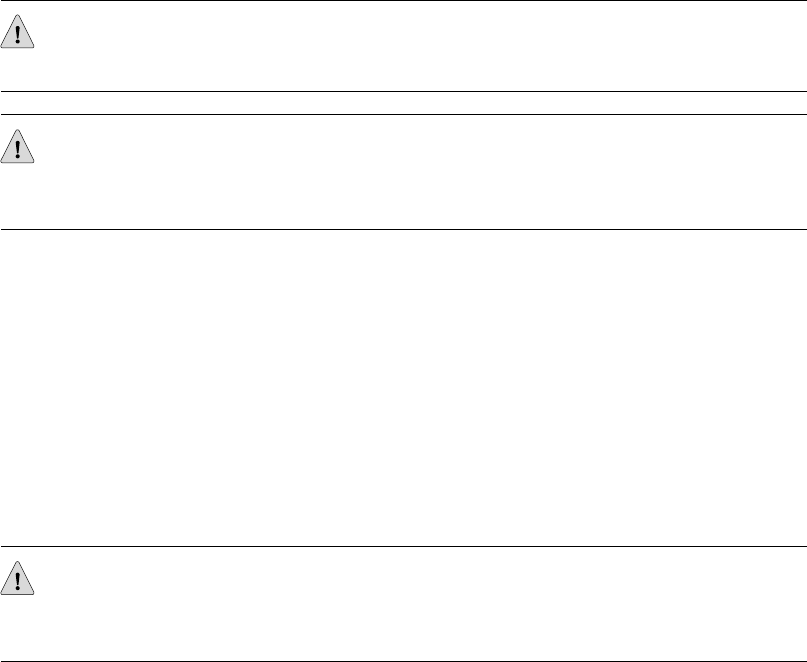
10. Insert the appropriate cables into the cable connector ports on each DPC (see
Figure 51 on page 110). Secure the cables so that they are not supporting their
own weight. Place excess cable out of the way in a neatly coiled loop, using the
cable management system. Placing fasteners on a loop helps to maintain its
shape.
CAUTION: Do not let fiber-optic cable hang free from the connector. Do not allow
fastened loops of cable to dangle, which stresses the cable at the fastening point.
CAUTION: Avoid bending fiber-optic cable beyond its minimum bend radius. An arc
smaller than a few inches in diameter can damage the cable and cause problems
that are difficult to diagnose.
11. Use one of the following methods to bring the DPC online:
■ Press and hold the corresponding DPC online button on the craft interface
until the green OK LED next to the button lights steadily, in about 5 seconds.
■ Issue the following CLI command:
user@host>request chassis fpc slot slot-number online
For more information about the command, see the JUNOS System Basics and
Services Command Reference.
CAUTION: After the OK LED turns green, wait at least 30 seconds before removing
the DPC again, removing a DPC from a different slot, or inserting a DPC in a different
slot.
You can also verify that the DPC is functioning correctly by issuing the
show chassis fpc and show chassis fpc pic-status commands, as described in
“Maintaining DPCs” on page 72 and “Maintaining DPC Cables” on page 74.
Replacing DPCs and Transceivers ■ 109
Chapter 13: Replacing Hardware Components



